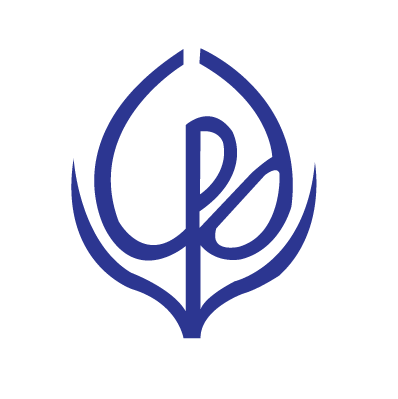Originally posted in The Business Standard on 5 November 2025
‘Billion-dollar cage’: What keeps leather from becoming Bangladesh’s next export powerhouse?
When the tanneries were shifted from Hazaribagh to Savar in 2017, the move was billed as a green transformation. Yet, untreated waste still flows into the Dhaleshwari River, contaminating water and soil, jeopardising global certifications and therefore, holding back exports.

Bangladesh’s leather industry, like a few others, was once hailed as the “next RMG”. Yet, despite having every natural advantage, including abundant raw hides, cheap labour, and decades of tanning heritage, its export earnings have been circling the same figure for over a decade — roughly a billion dollars a year.
In FY25, the sector earned $1.14 billion, contributing 2.3% to total export revenue.
It was the perfect candidate for export diversification; unlike ready-made garments (RMG), it relies almost entirely on domestic raw materials. Each Eid-ul-Azha, millions of animal hides flood the market, offering a near self-sustaining supply chain.
The industry also generates significant employment in rural and semi-urban areas, with nearly a million people involved across the value chain — from rawhide collection to finished goods.
Globally, the leather and footwear market size exceeds $420 billion. Bangladesh, with its cost advantage, could easily carve out a larger slice of the pie. In fact, sector leaders estimate an export potential of $10 billion annually, if compliance and infrastructure gaps were bridged.
But instead of scaling upward, exports have stagnated since 2012, when they peaked around $1.24 billion. Today, even after modest growth, the figure remains stuck in the same orbit — a phenomenon many now call the “billion-dollar cage”.
Industry insiders say it could easily earn five times that amount if only policy and compliance barriers were addressed. So why does the dream of transforming leather into Bangladesh’s next export powerhouse remain trapped behind a mix of bureaucratic inertia, structural weakness, and environmental neglect?
Policy paralysis and fragmented governance
Unlike the RMG sector, leather has no unified export strategy. Incentives are scattered across ministries, and regulatory oversight remains fragmented between the industries ministry, Bangladesh Small and Cottage Industries Corporation (BSCIC), and the Department of Environment.
Professor Mustafizur Rahman, distinguished fellow at the Centre for Policy Dialogue (CPD), said, “Unlike the RMG sector, which has long enjoyed bonded warehouse facilities, the leather industry had been asking for the same for decades. Such a facility would have allowed them to import inputs duty-free. Yet, it took the government several decades to grant it — only doing so in the very recent past.”
Disjointed governance has created operational chaos.

While the government encourages collective waste treatment, some tannery owners were told to install their own Effluent Treatment Plants (ETPs) — a cost most small and medium firms cannot bear. This tug-of-war between centralised and decentralised waste management has paralysed progress.
Rahman said, “To steadily expand exports in the leather sector, issues like effluent treatment, environmentally friendly production, and waste management have now become absolute priorities.”
The irony is that Bangladesh’s leather story mirrors the early days of its garment revolution — an industry with huge domestic input, low costs, and high global demand. But unlike RMG, the leather sector never received sustained policy nurturing.
Where garments benefited from bonded warehouse facilities, back-to-back LCs, and export incentives, leather faced bureaucratic red tape and inconsistent leadership. Where RMG invested in green compliance and certification, leather ignored the writing on the wall. And where garment factories adapted to changing buyer demands, many tanneries clung to outdated production methods.
The compliance problem
The Savar tannery estate, a crucial hub for the industry, remains incomplete, while its Central Effluent Treatment Plant (CETP) is poorly maintained and continues to release untreated water.
When the tanneries were shifted from Hazaribagh in 2017, the move was billed as a green transformation. The new industrial estate promised modern waste treatment, better safety and cleaner production standards. Instead, it became a costly blunder.
The CETP, the linchpin of the estate, was never completed properly. Built at a cost of Tk565 crore, the plant remains under-capacity, treating only about 14,000 cubic metres of wastewater daily against a peak demand of 35,000 cubic metres during Eid seasons.
The result: Untreated waste still flows into the Dhaleshwari River, contaminating water and soil, and jeopardising global certifications.
This environmental non-compliance has effectively locked Bangladesh out of premium global supply chains. The Leather Working Group (LWG), an international certification body recognised by brands like Nike, Adidas and Timberland, remains the gatekeeper of global sourcing.
Italy boasts 952 LWG-certified factories, India 334, and Pakistan 62 — but Bangladesh has fewer than 10. Without certification, local exporters are forced to sell semi-processed “wet blue” leather to China at discounts of up to 60%.
Compliance is not merely an environmental issue — it is an economic one. The absence of LWG certification costs Bangladesh around $500 million in lost export earnings every year. Foreign buyers, especially European ones, now avoid Bangladeshi leather altogether.
Md Shaheen Ahamed, chairman of Bangladesh Tanners Association (BTA), said, “I think our biggest challenge right now is compliance. Many of our tanneries have been classified because they failed to meet compliance requirements. The relocation process in 2017 was not carried out properly, which is why most of the factories ended up losing their classification. If BSCIC had managed that relocation properly, this problem might never have arisen in the first place.”

The compliance gap also has ripple effects on finance.
Banks are increasingly reluctant to extend credit to tanneries without proper environmental documentation, leading to liquidity crises. Cash-strapped producers are forced to sell hides at low prices, perpetuating a cycle of underinvestment.
Rahman said, “Even though we relocated the tanneries from Hazaribagh to Savar, we never managed to make the effluent treatment plant fully functional. As a result, our rivers continue to be contaminated. Because of this environmental non-compliance, many buyers are reluctant to source from Bangladesh. It’s not just that regulations in many countries have become stricter; consumers themselves now demand eco-friendly production and proper certification. Without those, they simply won’t buy. That’s another major constraint.”
Even within the domestic market, inefficiencies abound. There is no standard rawhide grading system, no organised auction mechanism, and limited vertical integration between tanneries and footwear manufacturers. Many tanners sell to middlemen who add no value, eroding margins further.
A workforce left behind
While the industry is more than 70 years old, its labour practices remain stuck in the past. According to the Tannery Workers’ Union, a large share of workers still lack formal contracts, minimum wages, or proper identity cards. Health and safety standards are weak, and social compliance — now a prerequisite for export competitiveness — is largely absent.
This neglect not only undermines global certification but also limits productivity. Global buyers increasingly demand traceable, ethically sourced materials, and worker welfare is a key part of that equation. Without reform, Bangladesh’s leather sector risks being seen as both environmentally and socially regressive.
Ahamed said, “The leather sector makes a substantial contribution to the national economy and to GDP — especially in terms of employment, domestic demand, and export earnings. From rawhide collection to the production of finished leather goods, the sector engages a large workforce.
“If we could overcome the compliance barriers, we could easily expand our output four or fivefold. But the reality is that we are unable to utilise our skilled workforce fully because of these compliance issues,” he added.
The industry’s development requires much more investment in technology, skilled manpower and product design. To promote high-end leather goods, we need strong fashion and design institutes that can train specialised professionals. But such institutions will not emerge from the private sector alone. This is where the state’s support was crucial—yet that support never really materialised.
“Access to skills, to fashion and design professionals, and to modern technology—all these have played a role in limiting the sector’s growth, ” said Dr Mustafiz.
“This is particularly frustrating because Bangladesh produces very high-quality leather. Unlike ready-made garments, where value addition is around 55–65%, in leather goods it can reach 80–90%.”
The billion-dollar question
Can Bangladesh’s leather sector ever break free of its billion-dollar cage? The potential is undeniable: a self-sufficient raw material base, proven manufacturing capability, and proximity to major markets. But potential alone is not power.
The failure to operationalise Savar’s CETP, the absence of credible certification, and the lack of an integrated export policy have collectively eroded global confidence. While global demand for ethically sourced leather goods grows each year, Bangladesh remains excluded from the conversation.

At the Savar Tannery Estate, untreated waste still flows into surrounding areas, contaminating water and soil, and jeopardising global certifications.
In the coming years, environmental requirements will become even more stringent across global markets. This will be a major constraint if we are not prepared. From the kind of energy used to whether production processes are carbon-friendly, environmental sustainability will only grow in importance.
Rahmna believes this sector still holds enormous potential. The value addition is high, and with the right focus — on environmental readiness, carbon emission reduction, workers’ rights, global assurance, and proper waste treatment — it could transform into a major export earner.
“So, we must make a concerted effort to pursue both avenues,” he added.
Ahamed said their biggest requirement is to make the Savar industrial estate fully compliant — particularly in terms of managing both liquid and solid waste.
“At the same time, we need to consider the financial strain the tannery owners are facing. Many of them have lost their working capital — nearly Tk10,000–12,000 crore in total — after investing in factory buildings at Savar,” he added.
Ahamed further said that if the government could provide Tk3,000–4,000 crore as new working capital, businesses could resume smooth operations.
“Those who are capable of obtaining LWG certification should be prioritised for soft loans so that they can install individual effluent treatment plants, invest in compliance upgrades, and rebuild their operations. With this kind of targeted financial and policy support, the sector could expand rapidly once again,” he said.
The leather industry’s stagnation is thus more than an economic failure; it is a governance failure. It reveals how institutional neglect can trap even a high-potential sector in perpetual underperformance.
Until Bangladesh learns to align its policy priorities with its industrial ambitions, the promise of a “next RMG” will remain just that — a promise, fading slowly in the smell of untreated tannin and lost opportunity.



